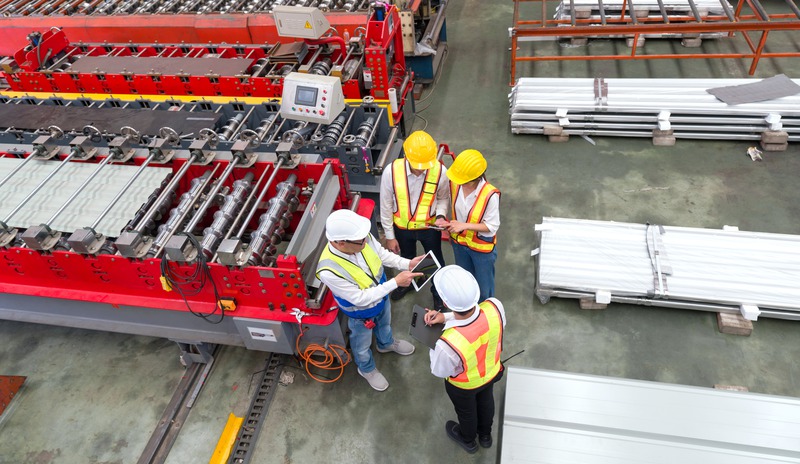Moving heavy machinery is no small feat, and ensuring the safety of your equipment during the process is paramount. Whether you’re relocating one piece of equipment or an entire factory floor, taking the right precautions can mean the difference between a seamless transition and a costly mishap. Let’s explore some practical steps you can take to protect your valuable machinery.
Assessing the Equipment and Site
Before diving into the moving process, it’s essential to assess both the equipment and the site thoroughly. This involves understanding the dimensions, weight, and type of machinery you’ll be moving. Additionally, you should evaluate the paths through which the equipment will be transported, noting any potential obstacles or challenges. This initial assessment allows you to plan effectively and anticipate any special requirements.
Conduct a Site Survey
Conducting a site survey helps identify potential hazards and determine the most efficient route for the move. Look for issues like narrow pathways, low ceilings, or uneven flooring. These are critical elements to consider as they may require specific equipment or adjustments to your moving plan.
Machinery Assessment
Understanding the specific needs of each piece of machinery is also vital when considering heavy haul transport in Brampton. Some machinery may require disassembly before moving, while others might need special stabilization techniques. This is especially important in urban areas, where the logistics of moving heavy equipment can be complex. Having this information at hand permits you to plan accordingly and reduces the risk of damage, ensuring a smooth and efficient transport process.
Choose the Right Moving Equipment
Having the right moving equipment can significantly improve the process’s safety and efficiency. Various options are available, each suited to different types of machinery and environments.
Types of Moving Equipment
-
Forklifts: Perfect for moving heavy loads over flat surfaces, but may not be suitable for narrow spaces.
-
Cranes: Ideal for lifting extremely heavy or large equipment, especially in tight or elevated spaces.
-
Skates: Great for heavy machinery that needs to be moved smoothly over short distances.
Safety Checks for Equipment
Before using any equipment, conduct a thorough check to ensure everything is in working order. Look for any signs of wear and tear, ensure brakes and controls are functioning properly, and verify that load capacities are appropriate for the tasks at hand.
Secure Skilled Personnel
Machinery moving services require skilled professionals. Selecting the right team can significantly impact the safety and success of your move.
The Importance of Training
Trained professionals have the experience and know-how to handle the intricacies of heavy machinery moving. They understand how to operate specialized equipment safely and can foresee and mitigate potential hazards.
Clear Role Assignments
During the moving process, ensure that every team member knows their specific roles and responsibilities. Clear communication is essential to avoid confusion and prevent accidents.
Utilizing Proper Techniques
Safe machinery movement hinges on using the proper techniques. Incorrect handling can damage equipment or even cause injuries.
Proper Lifting Techniques
Proper techniques are crucial, whether using mechanical or manual lifting methods. For instance, always lift with your legs and keep your back straight when manually handling equipment. For mechanical lifting, ensure that slings, chains, or straps are correctly rated for the load.
Load Distribution
Evenly distributing the load prevents tipping and promotes balance during the move. Use appropriate tools to ensure that weight is evenly spread, and adjust as necessary en route.
Insurance and Liability
Insurance plays a pivotal role in safeguarding your equipment during moving. Always verify that you’re adequately covered before commencing any machinery move.
Review Your Insurance Coverage
Before proceeding, review your current insurance policies. Does it cover potential damages that might occur during a move? If not, consider obtaining additional coverage specifically for transportation.
Liability Considerations
Make sure all parties involved understand their liabilities in case of an accident or damage. Clear agreements prevent misunderstandings and ensure all stakeholders are on the same page.
Communication and Coordination
Effective communication is a cornerstone of safe machinery moving. Ensuring that everyone is informed and synchronized can prevent accidents and facilitate a smoother operation.
Regular Briefings
Hold regular briefings to discuss the plan and any potential changes. This keeps everyone up to date, aware of potential challenges, and prepared for their roles.
Communication Tools
Utilize effective communication tools like radios or hands-free devices. They help maintain real-time contact and coordination, especially in large or noisy environments.
Safety Protocols and Emergency Procedures
Having a set of defined safety protocols and emergency procedures is critical to ensuring maximum safety.
Developing Protocols
Establish protocols that prioritize safety at every stage of the moving process. This includes guidelines for equipment operation, distance maintenance amongst team members, and emergency responses.
Emergency Plans
Know in advance what steps to take should an emergency occur. Make sure all team members are familiar with these plans and conduct regular drills if necessary.
Environmental Considerations
Consider the environmental impact of your machinery move. Factors like weather, terrain, and proximity to other structures might affect the process.
Weather Conditions
Weather can affect visibility, terrain traction, and the conditions of machinery. Schedule your move to avoid adverse weather, or make appropriate preparations if conditions cannot be avoided.
Protected Areas
When moving near protected areas or sensitive locations, take care to minimize disruption. Use barriers or other protective measures if needed.
Leveraging Partnerships with Professional Services
Enlisting professional services can add another layer of safety and efficiency to your machinery moving process. Experts can offer specialized knowledge, equipment, and other resources.
Choosing rigging services Brampton can be particularly beneficial if you operate in that area. They offer local expertise, understand common challenges, and provide tailored solutions to your needs.
Final Thoughts
Success in moving machinery relies heavily on assessing the environment and equipment, utilizing the right tools and personnel, and adhering to safety protocols. Keep communication lines open and maintain flexibility to deal with unexpected challenges efficiently. In short, a well-organized plan ensures that your equipment arrives safely at its new location, ready for operation. Effective planning, attention to detail, and the right partnerships can take a significant load off your shoulders—quite literally—making the entire process far more manageable.



